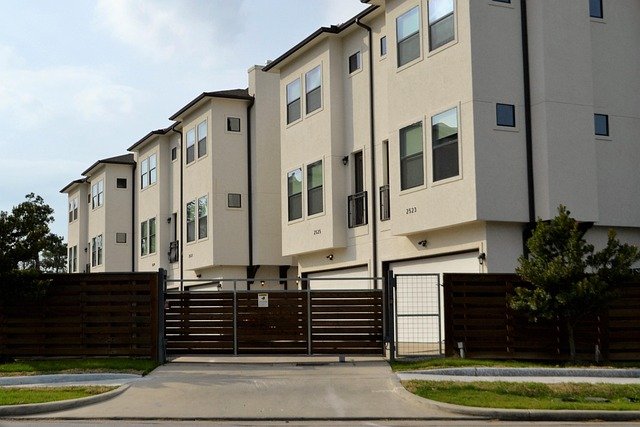Micro-Unit Dwellings: Reshaping Urban Living Spaces
The concept of micro-unit dwellings is gaining traction in densely populated urban areas, offering a solution to housing shortages and skyrocketing real estate prices. These compact living spaces, typically ranging from 200 to 400 square feet, are redefining the notion of home in bustling city centers. As urbanization continues to surge, with 68% of the world's population projected to live in urban areas by 2050, micro-units are emerging as a viable option for young professionals, students, and those seeking affordable housing in prime locations.

The driving forces behind the micro-unit trend are multifaceted. Soaring real estate prices in major cities have made traditional apartments unaffordable for many, particularly young professionals and students. Additionally, changing demographics and lifestyle preferences have led to a shift in housing demands. Millennials and Gen Z, who often prioritize experiences over possessions, are more willing to trade space for location and amenities.
Design Innovations in Micro-Unit Spaces
Architects and designers are at the forefront of the micro-unit movement, constantly innovating to maximize livability in minimal square footage. The key to successful micro-unit design lies in multifunctionality and clever storage solutions. Transformable furniture, such as murphy beds that convert into desks or dining tables, allows residents to reconfigure their space throughout the day.
Vertical space utilization is crucial in micro-units. Loft beds, built-in storage reaching to the ceiling, and multipurpose staircases that double as storage units are common features. Some micro-units incorporate sliding walls or rotating rooms, allowing residents to change the layout of their space to suit different activities.
High-end finishes and smart home technology are often integrated to enhance the living experience. From voice-controlled lighting and temperature systems to built-in speakers and automated blinds, these features help create a sense of luxury and convenience in compact spaces.
Economic Impact and Investment Potential
From an investment standpoint, micro-units present an intriguing opportunity. While the cost per square foot is often higher than traditional apartments, the overall price point is lower, making them attractive to both investors and renters. In markets with high land costs and strict zoning regulations, micro-units allow developers to maximize the number of units in a building, potentially increasing overall returns.
The rental yields for micro-units can be significantly higher than those of conventional apartments. In some urban markets, micro-units command rents that are 20-30% higher per square foot compared to standard units. This premium is often justified by prime locations and the inclusion of amenities that cater to the target demographic.
However, investors should be cautious. The long-term demand for micro-units remains uncertain, and regulatory challenges in some cities could impact future development. Additionally, the higher turnover rate associated with smaller units may lead to increased maintenance costs and management overhead.
Challenges and Criticisms
Despite their growing popularity, micro-units face several challenges and criticisms. One primary concern is the potential negative impact on mental health due to living in confined spaces. Critics argue that micro-units may exacerbate feelings of isolation and claustrophobia, particularly in light of the increased time spent at home during the COVID-19 pandemic.
There are also concerns about the long-term societal implications of normalizing extremely small living spaces. Some worry that micro-units could lead to a lowering of living standards and expectations, particularly in cities already grappling with issues of inequality and gentrification.
Zoning laws and building codes in many cities have not kept pace with the micro-unit trend, creating regulatory hurdles for developers. Minimum unit size requirements, parking regulations, and density restrictions often need to be navigated or challenged to make micro-unit developments feasible.
The Future of Micro-Unit Dwellings
As urban populations continue to grow and housing affordability remains a pressing issue, micro-units are likely to play an increasingly important role in the real estate landscape. The future of micro-unit dwellings may see further innovations in design and technology, making these spaces even more efficient and livable.
Community-focused micro-unit developments, which balance private living spaces with expansive shared amenities, are gaining traction. These projects aim to address concerns about isolation by fostering a sense of community among residents. Shared kitchens, co-working spaces, and communal lounges are becoming standard features in many micro-unit buildings.
The concept of micro-units is also expanding beyond residential use. Some developers are exploring micro-unit hotels and short-term rentals, catering to travelers seeking affordable accommodations in prime urban locations. This diversification could open up new investment opportunities in the hospitality sector.
As cities evolve and adapt to changing demographics and housing needs, micro-units represent a creative solution to urban density challenges. While not without controversy, these compact living spaces are reshaping our understanding of home and community in the 21st-century cityscape. For investors, developers, and urban planners, micro-units offer a compelling avenue to address housing shortages and create vibrant, sustainable urban communities.





